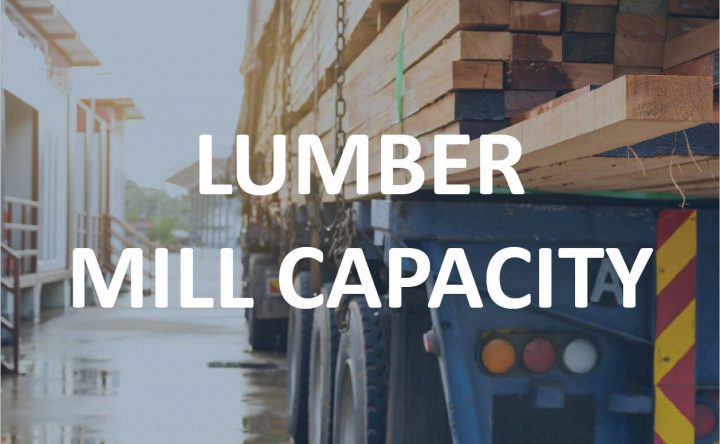On Thursday (7-30-21), and one day prior to their scheduled expiration, The Federal Housing Finance Agency and the Federal Housing Administration announced that they would both be extending their eviction bans on borrowers of foreclosed properties until September 30, 2021. Other federal agencies are expected to follow suit.
Wood Markets News
Interfor Expecting Production Disruptions at Interior B.C. Sawmills in Q3 Due to Impact of Wildfires and Other Factors on Log Supply
Interfor, on Thursday (7-29-21), announced that it is expecting production disruptions at its B.C. Interior sawmills during Q3 of 2021 due to the ongoing impacts of wildfires and other factors on log supply. Interfor said that based on current information, it is expecting to curtail a minimum of 50 million board feet of production across its B.C. Interior operations in August.
Canada’s Industrial Product Price Index Flat in June Due to Lumber and Other Wood Products Price Declines
Statistics Canada (StatsCan) today (7-30-21) released the Industrial Product Price Index (IPPI) for June. The IPPI was unchanged month-over-month in June and was up 16.8% when compared with June 2020. The Raw Materials Price Index (RMPI) increased 3.9% on a monthly basis in June and was up year-over-year 38.1%.
Morgan Sawmill Owners Hope to Help Alleviate Structural Timber Shortage
Australia’s Federal Government’s Home Builder Scheme, which was launched more than 12 months ago in response to the coronavirus pandemic, is running into a structural timber shortage which is threatening to detail the state’s housing boom. Morgan Sawmill located in Jamestown is proposing to build a second mill, located in Dublin, capable of producing enough structural lumber to build about 500 homes a year.
The Number of Prospective Buyers Turning into Active Buyers Continued to Grow in Q2 2021
Further analysis of the National Association of Home Builders Housing Trend Report (HTR) for Q2 of 2021 reveals that of the 17% of American adults considering a future home purchase, 61% have moved beyond planning and are actively searching to find one to buy. This marks the sixth consecutive quarter of growth, a trend that started in Q4 of 2019, when it was at 43%.
Canada’s Gross Domestic Product Contracted -0.3% in May
Statistics Canada (StatsCan) reported on Friday (7-30-21) that real gross domestic products (GDP) in Canada contracted -0.3% in May, following a -0.5% drop in April, and that total economic activity was approximately -2% below February 2020’s pre-pandemic level. Preliminary information indicates an approximate 0.7% increase in real GDP for June.
U.S. Consumer Sentiment Declines in July as Inflation Worries Continue to Grow
The University of Michigan today (7-30-21) released its second and final reading of Consumer Sentiment for July. According to the survey, U.S. consumer sentiment fell to a five-month low in July amid lingering concerns about inflation. The University of Michigan’s Consumer Sentiment Index (MCSI) fell to a final reading of 81.2, the lowest level since February, from June’s final level of 85.5.
Construction Employment Has Remained Flat or Declined in 101 Metro Areas Since February 2020
According to an analysis provided by the Associated General Contractors of America (AGC), taken from data recently released the Department of Labor, construction employment declined or stagnated in 101 metro areas between February 2020 — the month prior to the start of the COVID-19 pandemic — and June of 2021.
Pending Home Sales Decline -1.9% Month-Over-Month and Year-Over-Year in June
The National Association of Realtors® (NAR) is reporting that their Pending Homes Sales Index (PHSI) — which is based on signed real estate contracts, not actual closings, for existing single-family homes, condos, and co-ops — declined -1.9% to a reading of 112.8 in June. This after recording a notable 8.0% increase in May.
Heavy Congestion at New Zealand Ports Leads to Logging Industry Frustration and Market Fluctuations
New Zealand forestry contractors are reporting that they are losing money, work, and jobs due to fluctuations in the timber markets and major delays at the country’s ports. Driven by extreme demand for logs from China and other international markets, New Zealand timberland owners in the first half of 2021 raced to harvest as many logs as possible to take advantage of record high prices.






